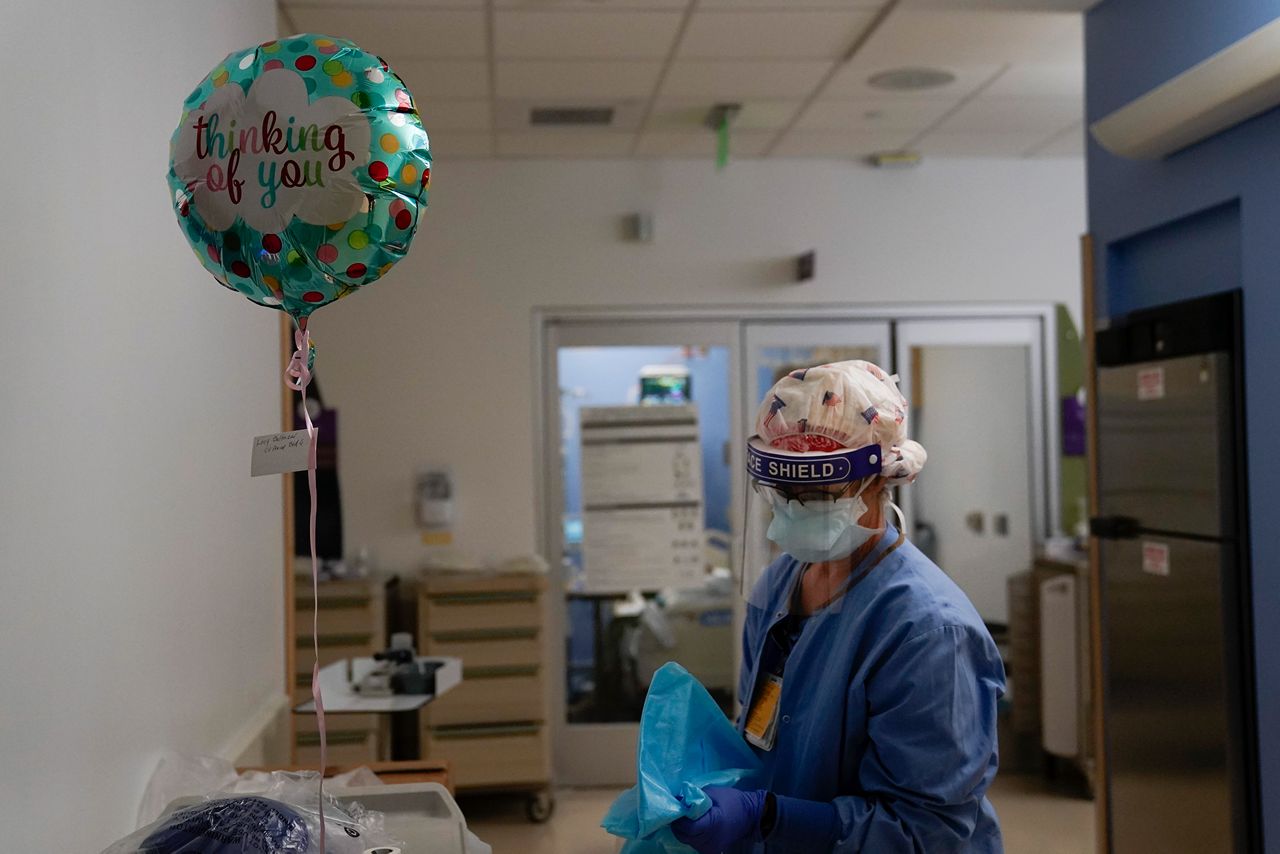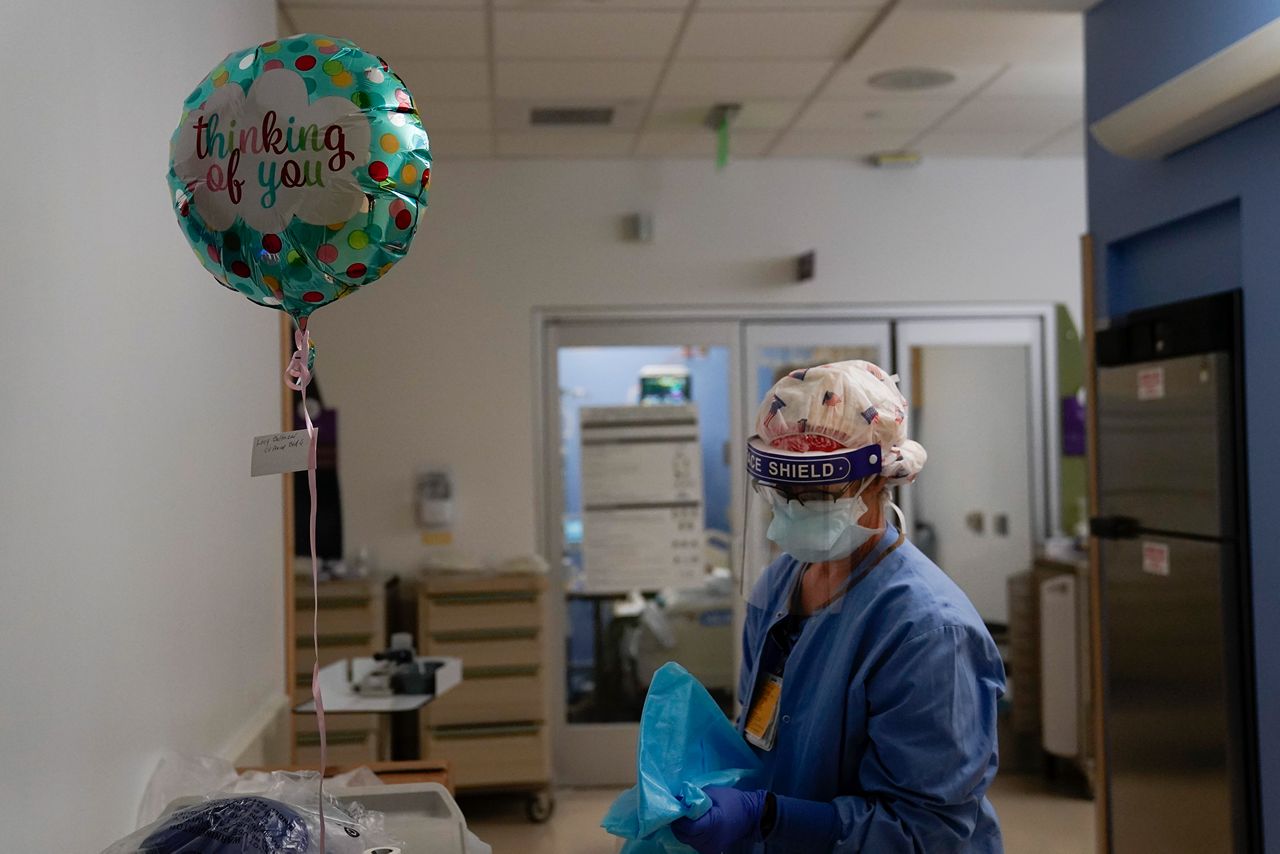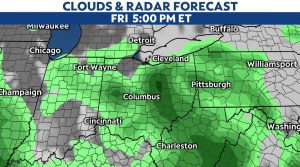COLUMBUS, Ohio — Ohio surpassed 20,000 COVID-19 deaths on Tuesday, a sad milestone in the state’s battle with COVID-19.
What You Need To Know
- The state reported 41 new deaths as total deaths surpassed 20,000
- COVID-19 hospitalizations fell to the lowest level since the pandemic began
- More than a dozen average daily deaths are still being reported in Ohio
Tuesday’s update showed 20,021 deaths, making Ohio the 10th U.S. state to reach 20,000 deaths, according to Centers for Disease Control and Prevention data. The CDC reports that Ohio’s total death rate is in the middle of the pack at 170 per 100,000 residents, ranking 28th of U.S. states.
Ohio reported positive news in the state’s effort to curtail the virus as COVID-19 hospitalizations fell to a record low since the beginning of the pandemic, a spokesperson for the Ohio Hospital Association said.
On Tuesday, 503 COVID-19 positive patients were hospitalized, as the figure dropped below the previous low of 512 on June 21, 2020.
The state’s 14-day case rate per 100,000 people, the primary metric state officials use to monitor case trends, has reached a level not seen since June, Ohio Department of Health Chief Medical Officer Dr. Bruce Vanderhoff said Monday afternoon.
Ohio dropped below 50 cases per 100,000 people over a two-week period, Vanderhoff said. The last time Ohio dropped below 50 cases per 100,000 over a two-week period was June 11-25, 2020, Vanderhoff said.
The vaccine effort has helped cases drop from a peak above 900 back in December 2020, Vanderhoff said.
While the state’s top doctor said these are positive signs, he cautioned that the threat of COVID-19 remains. The state crossing the milestone of 20,000 deaths, as Ohio continues to average more than a dozen daily deaths, is a reminder the health crisis continues.

A registered nurse puts on her PPE next to a balloon delivered to a patient in a COVID-19 unit. (AP Photo/Jae C. Hong, File)
“If there are low vaccination rates in a particular geography, we could see localized pockets of COVID-19 cases arising and such pockets could cause a surge of COVID-19 cases, increasing the threat of COVID-19 to the residents of Ohio, along with the possibility of increased hospitalization and deaths,” Vanderhoff said.
Local hospitals say the situation is night and day from the state’s winter peak, thanks to recent progress against COVID-19.
Adena Health has seen its COVID-19 patient numbers decline from a peak of about 60 down to just one patient this week at its main hospital in Chillicothe and three critical access hospitals in southern Ohio, said Dr. Kirk Tucker, internal medicine physician and chief clinical officer.
Tucker said it’s tragic to see the death toll in Ohio continue to rise, especially with vaccines widely available.
“Everybody that dies today from COVID probably didn’t have to, because the vaccine was available. These have gone from non preventable deaths to preventable deaths,” he said. “This is like letting plane crashes happen every single day — a 747 going down every day and not doing anything about it.”
Tucker remembers back around the holidays when Adena’s COVID-19 patient unit filled up and they made a call to Columbus to take overflow patients.
“We hit sort of our cap on the unit, and the rest of the hospital was getting full,” he said. “All three major health systems in Columbus were not accepting new patients, and that was a real eye opener for us here.”
The hospital was being pushed to a critical point, forcing Adena to shift gears rapidly to take care of the patients who had no where else to go. At the worst point, Adena Health had 75 staff out sick with the coronavirus, and they had to bring in emergency staffing resources.
Tucker believes the death toll in Ohio wouldn’t be so if high if hospitals hadn’t been so strained during the surge.
“The true concept of rationing of care — no politician likes to say that, it’s a buzzword, but unfortunately when any health system is pressed to that degree, rationing happens naturally,” he said.
In Ohio, health systems didn’t become as flooded as areas in the northeast, but Tucker said it’s undeniable that care was comprised due to the strain of COVID-19.
He said hospitals aren’t full of code blue teams to aid dying patients, so when the hospitals were pressed to critical levels mortality rates likely rose. If a care team has to transition from a 1 to 5 ratio with patients to a 1 to 10 ratio, there is a compromise, he said, especially in those all-hands situations with crashing patients.
While the recent downward trends in hospitalizations are encouraging, Tucker said the continued increases in the total death toll is still very sad.
“I personally can’t think of a more terrifying way to die than suffocation,” he said. “We first apply the oxygen flow via that little fork thing in your nose and then we put a mask on your face and kind of push it in to you, and then if you get sicker, we stick a tube down your throat and literally seal it off and force the oxygen in and out of the lungs.”
Tucker said he hopes Ohioans will continue to get vaccinated so the winter surge is the last, and so 20,000 deaths is hopefully the last tragic milestone.




